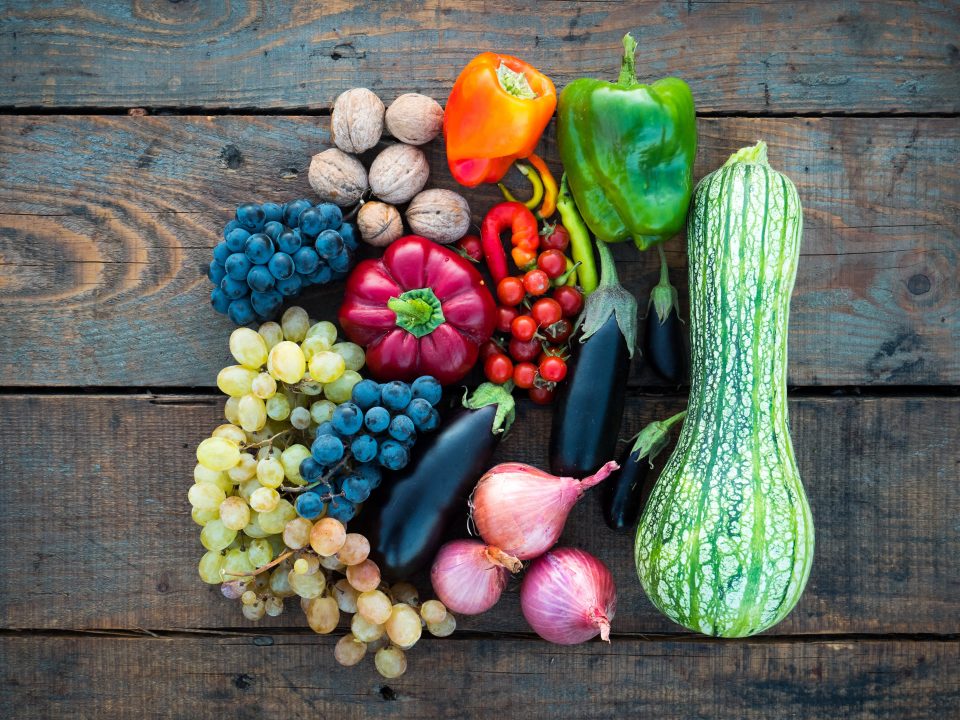Antioxidants
Antioxidants are the superheroes that fight free radicals! These “scavengers” are both artificial and natural substances that are found in our bodies. When the body expends a large amount of energy through aerobic movement, free radicals are formed. Let’s take a closer look.
Chemistry & Diffusion
Chemistry is the study of the unseen world around us. Therefore, free radicals are an uncharged and highly reactive molecule with an unpaired electron. When a molecule has an unpaired electron, the electron wants to pair with another forming a chain (Free Radical Chemistry, n.d.). This can lead to a harmful ending!
Cells allow certain uncharged molecules to pass through their membrane by diffusion. Free radicals that cross the membrane transform into a solid and slow down the fluid movement (Cooper, 2000). Ultimately, diffusion decreases in a cell membrane. This causes a lower oxygen availability to the mitochondria. The mitochondria’s job is powered by oxygen to convert sugar into energy from sources like glucose (2000).
When there is lower oxygen availability that is caused by free radicals, the mitochondria is forced to produce more free radicals by hypoxia that can damage lipids, proteins, and DNA (US National Library of Medicine National Institutes of Health, 2017). Consuming antioxidants will prevent this, because they are the same phytonutrients that help protect plants from insects.
Antioxidant Enriched Fruits & Vegetables
Antioxidants are phytonutrients that are born in plants. Vegetables and fruits are commonly known to enrich our body with antioxidants. Some studies show that they may treat brain injuries, stroke, and even cancer.
These are the carbohydrate groups of vegetables and fruits that carry rich vitamins and antioxidants.
Vegetables
- Carrots
- Sweet potatoes
- Pinto beans
- Artichokes
- Dark leafy greens
- Black beans
- Russet potatoes
- Avocados
- Asparagus
- Beetroot
- Radish
- Pumpkin
- Squash
- Kale
Fruits
- Cranberries
- Raspberries
- Blueberries
- Blackberries
- Red grapes
- Figs
- Cherries
- Guava
- Pears
- Watermelon
- Tomatoes
Dried fruits (also have a higher concentration of antioxidants)
- Pears
- Plums
- Apples
- Figs
- Raisins
- Dates
Summary
A large amount of free radicals in our bodies can cause aging, age-related diseases, and other medical conditions (2017). Free radicals might roam in our bodies, but we can adjust our meals to combat these rascals from further damage! Consider adding a cup of vegetables and fruits into one meal per day. Some vegetables and fruits can be placed as small portions inside a small pouch or bag. Remember, small portions are the size of your palm. This is a good way of measuring an accurate amount of vegetables and fruits to incorporate antioxidants in your meals!
Author: Jamie Moore (senior at Sam Houston State University Pre-Nursing)
References
Cooper, G. M. C. (2000). Transport of Small Molecules: The Cell: a Molecular Approach 2d. Edition. US National Library of Medicine National Institutes of Health. https://www.ncbi.nlm.nih.gov/books/NBK9847/
Free Radical Chemistry. (n.d.). Chemistry Texas A&M University. Retrieved December 5, 2020, from https://www.chem.tamu.edu/class/fyp/stone/tutorialnotefiles/freerad.htm#:~:text=The%20unpaired%20electron%2C%20when%20it,carbons%20of%20the%20monomer%20molecule.
US National Library of Medicine National Institutes of Health. (2017, April 6). Free-radicals and advanced chemistries involved in cell membrane organization influence oxygen diffusion and pathology treatment. PubMed Central (PMC). https://www.ncbi.nlm.nih.gov/pmc/articles/PMC5707132/
More Reading on Diffusion Across the Cell Membrane
Yang, N. J. Y., & Marlon J. Hinner, M. J. H. (2016, June 2). Getting Across the Cell Membrane: An Overview for Small Molecules, Peptides, and Proteins. Us National Library of Medicine National Institutes of Health. https://www.ncbi.nlm.nih.gov/pmc/articles/PMC4891184/


